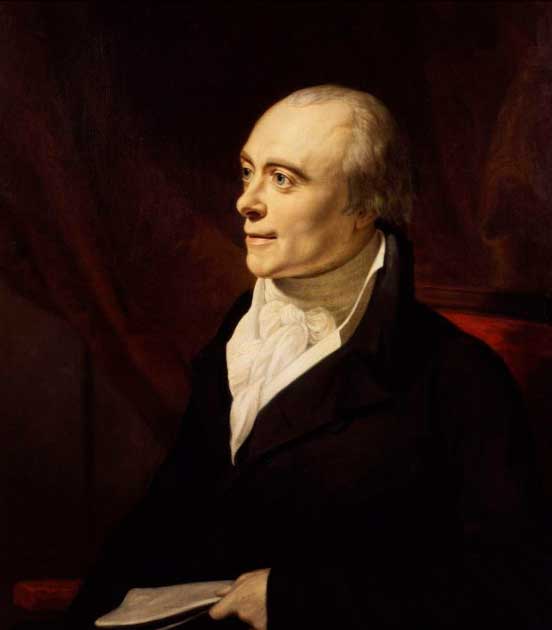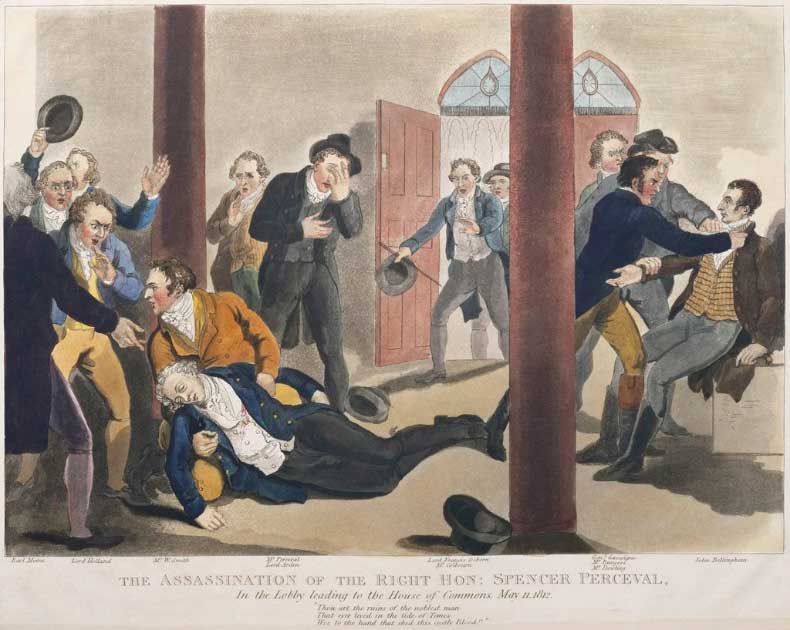Assassination attempts and successful killing of Prime Ministers and Presidents for many political and personal reason has been common throughout history. Regardless of which country it is, you will almost always find assassination in their history.
Although every political leader’s assassination is a tragedy on a personal level, the person we are talking about in this article has a special place in British history because he is the only British Prime Minister to date to be assassinated.
What had Spencer Perceval done?
Who was Spencer Perceval?
Belonging to a noble family, the British Prime Minister was a brilliant lawyer whose education was completed at some of the best educational institutions in England, like Harrow School and Trinity College, Cambridge. He studied law at Lincoln’s Inn and became a King’s Counsel in 1796.
His career in law was brilliant, as was his move into politics, despite the unexpectedly rocky start of a closely fought election for his seat which he had won only ten weeks earlier unopposed. However, he went down infamously as the only British Prime Minister to be ever assassinated.
After a stint as Attorney General and then Chancellor, Perceval became Prime Minister in 1809, leading Britain at the height of the Napoleonic wars. At first, Spencer Perceval headed a weak, crisis-ridden government.
From economic depression to rebellious riots, the madness of King George III, there were many crises that the erstwhile Prime Minister handled deftly. Finally, in the year 1812, just when it looked like his government was becoming stable, he was assassinated in the Lobby of the House of Commons.

On the morning of 11 May 1812, an otherwise unremarkable man, undistinguished in the crowd of the House of Commons, shot the British Prime Minister. This 40-year-old man, named John Bellingham, wore an overcoat that had a nine-inch-long deep pocket that hid a loaded pistol.
He also had a second pistol with him, showing his determination to assassinate the Prime Minister that day. Although no one recognized the man at first glance, he was a frequent visitor of the Parliament buildings.
He could often be found sitting at the House of Commons gallery and marked and observed many Parliament members in the few weeks leading up to that fateful day. Until the moment he tried to kill the Prime Minister, he was taken for just about any man, calm and composed, keen on seeing the country’s politics fold out in the Parliament.
The Assassination of Spencer Perceval
At 5pm that day, Bellingham walked into the lobby of the House of Commons and waited for the Prime Minister to come out. The Parliament that day was looking into the issue of Orders in Council that placed embargoes on French trade. However, now the parliament members wanted the orders repealed and trade reinstated.
That day, the House of Commons was not too busy as only 60 out of the more than 600 parliament members were present there. The smaller crowd at the House of Commons may have helped the assassin in killing the Prime Minister with a shot.
While members of the Parliament were already present in the House of Commons, the Prime Minister had not yet arrived, to the annoyance of the MP who had brought the issue up for discussion. This was not the first time where the prime minister was late, but it would be the last.
The Prime Minister was late because he decided to walk from his official residence to the Palace of Westminster instead of taking the regular carriage. It was a fine May evening, and the Prime Minister quite liked his walk. It would be 5.15pm before he arrived.
As the Prime Minister entered the lobby of the House of Common, Bellingham did not attack immediately. He stood up from his sitting place near the hearth and removed the hidden pistol from his overcoat pocket. In the crowd that gathered around the Prime Minister, no one noticed when the assassin walked up to the Prime Minister and shot a bullet directly into his chest.
- Assassination of Olof Palme: Who Killed the Swedish Prime Minister?
- Who was the Babushka Lady at JFKs Assassination?
Nobody could understand what was happening for a moment, and it seemed as if the dying Prime Minister also took a moment to understand that he was murdered. The sudden flash and bang of the bullet astonished everyone who surrounded the leader and had only expected a quiet conversation with him.

The last words of the Prime Minister before slumping down to his approaching death were, “I am murdered”, as if stating an obvious fact that settled down on him in those final moments.
But Why?
What had driven Bellingham to kill his Prime Minister? He certainly didn’t seem the intend to escape surrendering as soon as he was apprehended by those around him.
The initial concerns of the Government were that this was the first act in a general uprising. Europe was at war and the continent was being torn to pieces by Napoleon’s bellicose ambitions, and there were also angry elements at home who might have struck out at Perceval.
But it was nothing of the sort. Bellingham turned out to be a merchant who had been imprisoned during an earlier journey to Russia. He felt the Government of the United Kingdom owed him compensation for this imprisonment, but his petitions for money had been ignored. It is possible that Perceval was not even aware of them.
After a final meeting during which a civil servant refused his request for money but told him to “take whatever measures he thought proper”, Bellingham bought two pistols, returned to the House of Commons, and shot the Prime Minister. Bellingham was tried on Friday 15 May 1812, found guilty, and hanged from a tree three days later. He outlived Perceval by a single week.
Few remember the death of the Prime Minster today, and in that sense he has become doubly lost. But Spencer Perceval’s death came at a crucial time for European politics. Who knows, had he lived the United Kingdom he helped build could have been very different from the country today.
Top Image: John Bellingham fires the fatal shot that kills Spencer Perceval. Source: Internet Archive Book Images / Public Domain.
By Bipin Dimri